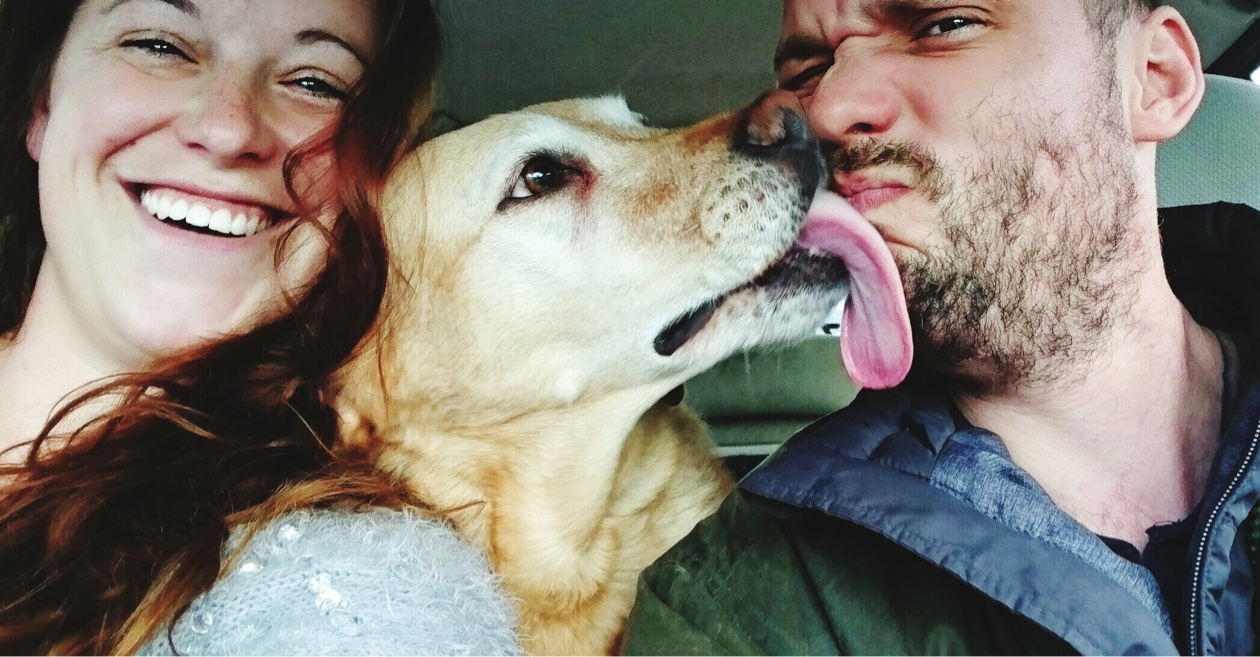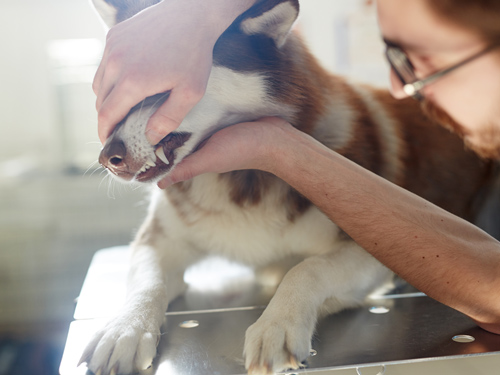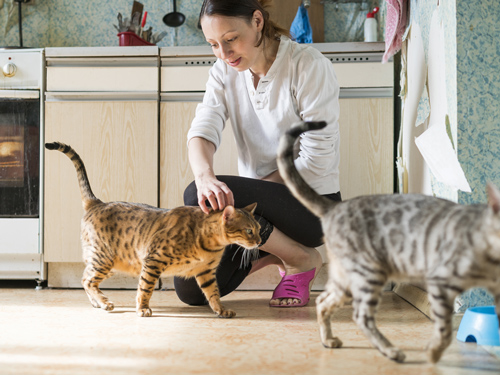
Cat and dog dental care: what you need to know
Keep your cat or dog happy and healthy and your vet bills low by learning how to take care of your pet’s teeth. Find out everything you need to know with our handy guide.
Published:21 January 2025
Dental care for dogs
A good dental care routine is essential if you want to avoid expensive visits to the vet. Some treatments may be covered by your pet insurance but others may not, so be sure to check your policy for more information.
The earlier you start brushing your dog’s teeth, the easier it’ll be to establish a routine. If you’re just starting out, try some of our suggestions below.
How to brush a dog’s teeth
- Introduce your puppy or dog to the idea of having their teeth brushed slowly.
- Start by letting them get used to you lifting their lips to look at their teeth.
- Wrap a cloth around the tip of your finger and work it over their teeth.
- Once your dog is comfortable with this, you can introduce a soft-bristled dog toothbrush.
- Move the toothbrush up and down gently, at a 45-degree angle and make sure you focus on the area between their teeth and gums.
- Once your pup is used to the brush, you can introduce some special dog toothpaste. Try meaty flavours your dog will enjoy the taste of.
Ideally you should clean your dog’s teeth every day but if you’re struggling, aim for at least 3 to 4 times a week.
Another little help: Chew toys and dental sticks (which are designed to remove plaque), are another great way to clean and protect your pet’s teeth. It might also be worth speaking to your vet about oral hygiene gels that can help prevent nasty build-ups.

Dental care for cats
Persuading your cat or kitten to have their teeth cleaned can be tricky but patience, persistence and lots of praise can help. Stay calm, avoid making the experience stressful and reward your cat with treats after every session - you’ll soon be on your way to a better dental care routine.
How to clean your cat’s teeth
- Get your kitten used to having their mouth touched as early as possible but don’t try brushing until after they’ve lost their milk teeth.
- Pick a time of day and stick to it, to help establish a routine.
- Get some meat-flavoured toothpaste (specially formulated for cats), pop a little on your finger and let your cat lick it off to get them used to the taste.
- Once you’ve found a toothpaste they like, you can introduce a cat toothbrush.
- When approaching your cat with the brush, make sure to not make any sudden hand movements, as this may scare them, or put them at unease.
- Let your cat get used to the brush, touching their lips and teeth with it gently to begin with. Don’t start brushing right away.
- When your cat is comfortable, gently brush up and down with the toothbrush, at a 45-degree angle. Pay special attention to the area between their teeth and gums. Stop if your cat is stressed or unhappy.
Aim to clean your cat’s teeth once a day or, if that’s a struggle, three times a week at least.
Another little help: If your cat really hates having their teeth brushed, ask your vet about oral hygiene gels designed to prevent plaque build-up. You can also buy cat dental chews designed to scrape teeth clean.
Warning signs to watch out for
Keep an eye out for these warning signs as part of your normal grooming routine.
- Regularly check your cat or dog’s teeth for obvious signs of discolouration or decay.
- Check their gums to see if they’re red, inflamed or bleeding. You might notice some bleeding when brushing, which can be a sign of gum disease.
- Run your hands over the outside of their mouth to check for unusual lumps or bumps, which could be abscesses.
- Look out for excessive drooling, chewing or a change in eating habits. This might be a sign that your pet’s teeth are hurting.
- Bad breath can be a sign that there’s something wrong and could indicate a build-up of plaque, a cavity or the beginnings of gum disease.
- Sneezing and a runny nose can be symptoms of an abscess or upper jaw infection.
Don’t put off visiting a vet if you’re worried. Some dental treatments may be covered by your pet insurance but others may not, so be sure to check your policy for more detailed information.
Want to know more? Find out about the dental treatments covered by our pet insurance.

Worried? Pay your vet a visit
If you have a feeling something’s not right with your pet’s teeth or gums, you should make an appointment with your vet as soon as possible. Alternatively, you could check out a pet dentist who specialises in animal dentistry.
Got pet insurance? Check your policy to see which treatments are covered.
If you’re wondering what kind of dental care cover might be available for your pet, our Pet Insurance comparison page might be handy.
Invest in your pet’s dental health
Helping your cat or dog look after their teeth will make them healthier, happier and less likely to floor you with their stinky breath. We hope our tips will help you embrace good pet dental care together.

Looking for more information?
Tesco Pet Insurance includes vetfone
Get advice for your pet, whenever you need it. Just call the vetfone helpline.
- Talk to vets and nurses registered with the Royal College of Veterinary SurgeonsTalk to vets and nurses registered with the Royal College of Veterinary Surgeons
- 24/7 phone, live chat and video calls24/7 phone, live chat and video calls
- Unlimited access, at no extra costUnlimited access, at no extra cost
Important information
Tesco Pet Insurance is arranged, administered and underwritten by Pinnacle Insurance plc. Tesco Personal Finance Ltd acts as an introducer to Pinnacle Insurance plc which is authorised by the Prudential Regulation Authority and regulated by the Financial Conduct Authority and the Prudential Regulation Authority (register number 110866). Registered Office: Pinnacle House, A1 Barnet Way, Borehamwood, Hertfordshire, WD6 2XX. Tesco Personal Finance Ltd and Pinnacle Insurance plc are not part of the same corporate group.
Vetfone is provided by Vetsdirect Ltd.
Tesco Insurance is a trading name of Tesco Personal Finance Ltd, Registered Office: 2 South Gyle Crescent, Edinburgh, EH12 9FQ (registered in Scotland, no SC173199) which is authorised and regulated by the Financial Conduct Authority (register no. 186022).
We do not provide personal recommendations to customers.
The content on this page aims to offer an informative introduction to the subject matter but does not constitute expert advice specific to your own situation. All facts were correct at time of publication and were compiled using a range of sources.